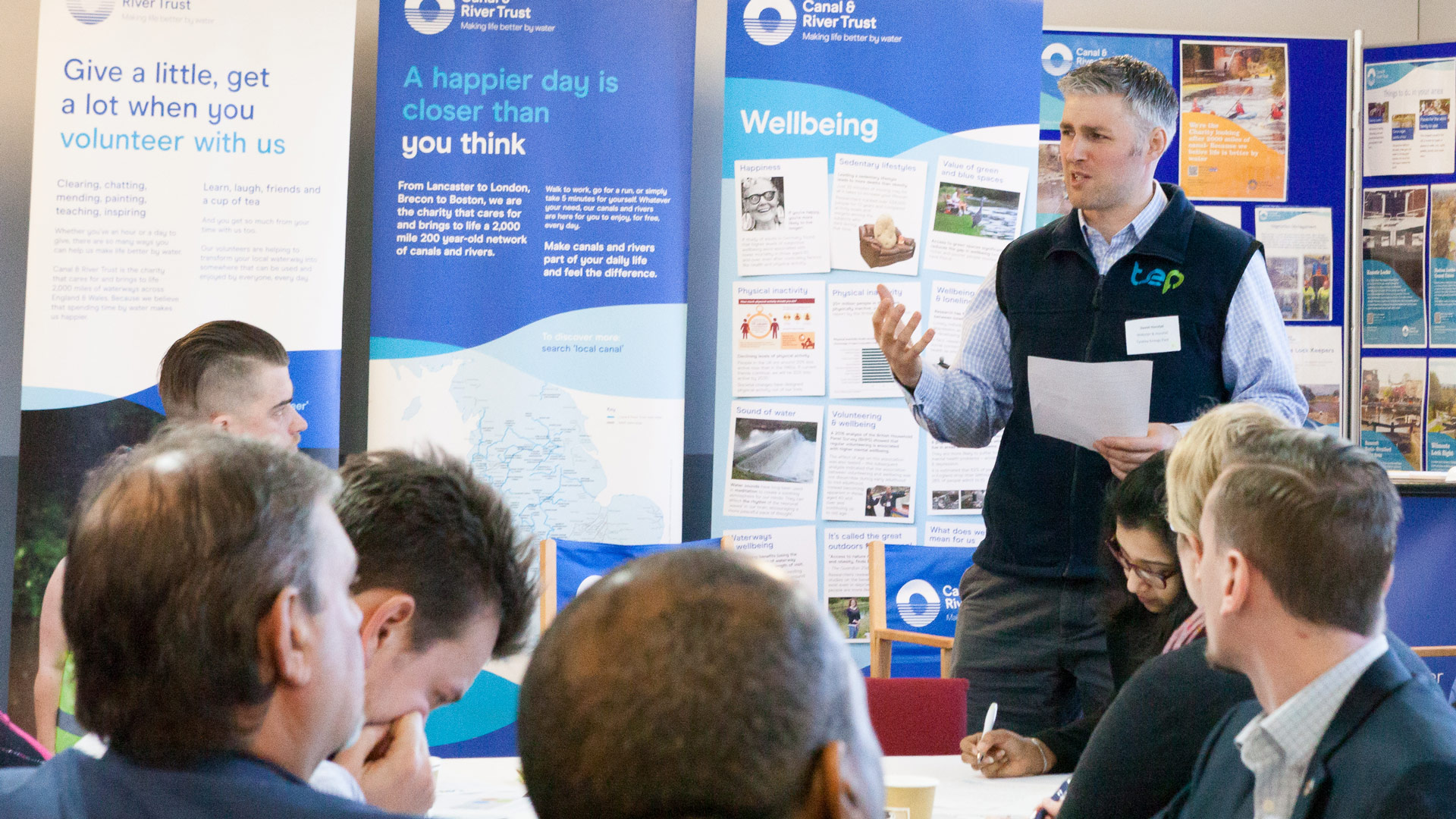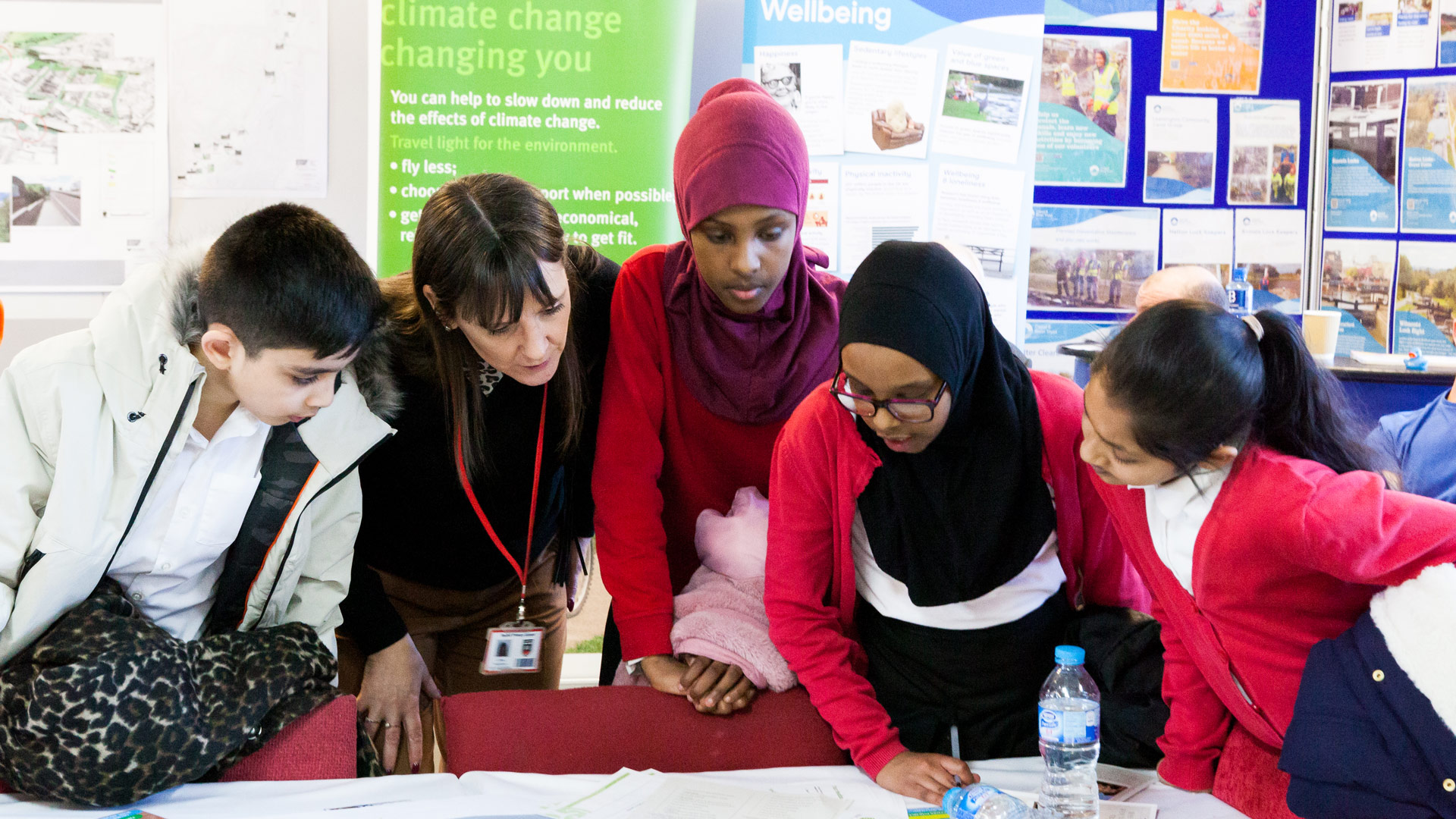
Boris Johnson's ten-point plan for a green industrial revolution launched in November 2020, was a key declaration of political intent to cutting-edge companies.
One such is Birmingham's oldest manufacturing business, Webster and Horsfall, which is behind the transformation of a 6.5ha industrial site in the east of the city. Over the past decade, the family-owned business has been making a transition from metal bashing into the type of modern, low-carbon energy park that the UK needs to make if it is to fulfil the prime minister's aspirations.
The industrial heritage
Webster and Horsfall was founded in 1720, making armoured wire for the first successful transatlantic telegraph cable in 1866 and later, spring wire for aeroplanes and cars, and by the end of the Second World War it had more than 1,000 employees. But from the 1960s the business began to slide and, like much industry across Birmingham, it spiralled into a decline. The once-thriving, industrial area of Tyseley where the factory is situated faced social and economic challenges, which required substantial investment and regeneration to overcome.
In 2010 the board began consolidating the business into a smaller footprint, focusing on producing high-quality, low-volume wire for niche markets for springs and pipe-bending equipment. This enabled its old assets – empty sheds and factory buildings with industrial use planning permissions – to be released for redevelopment on a rebranded Tyseley Energy Park (TEP).
Phase 1
In 2013, TEP secured £50m investment and built a biomass power station that produces 10.4MW of green power from waste wood. The plant has created 19 new jobs and diverted 72,000 tonnes of waste wood from landfill, generating power equivalent to the demand of 17,000 local homes. This electricity is supplied to all energy park tenants, enabling the company to reduce the unit prices of its manufacturing operation and make it more competitive while meeting its sustainability goals.
TEP director of property David Horsfall was invited to sit on Birmingham City Council's green commission in 2013 exploring how to meet the city's low-carbon ambitions, and here he met other key local stakeholders. With one of the council's sustainability officers, he visited the Swedish city of Vaxjo, which had cut its fossil fuel emissions by 41% between 1993 and 2011. Here he saw the potential for transforming his industrial site and the wider area.
David discussed the options with the city council and key stakeholders whom he had met on the green commission and a newly created Energy Capital project funded by the EU Climate Knowledge Innovation and Community programme. This enabled serious research planning for the site and for new ideas to crystallise, while the company also strengthened its connections with funding agencies such as the Greater Birmingham Local Enterprise Partnership.TEP also formed a group bringing together influential stakeholders from the public sector, industry, business and academia, which meets quarterly to share ideas and develop projects and systems thinking that can be applied at the city scale.
The company was ahead of the curve in seeing its unused industrial land as a possible game-changer. It realised the future lies in becoming a renewable energy provider and developer of clean energy technologies and companies.
“The company was ahead of the curve in realising the future lies in becoming a renewable energy provider and developer of clean energy technologies and companies”
Phase 2
Taking advantage of its strategic location between the city centre and the airport, TEP developed a refuelling station offering a range of low- and zero-carbon fuels – hydrogen, biodiesel, electric charging, bio-compressed natural gas – to enable trucks, vans and cars to comply with clean air zone requirements. An electric vehicle leasing company is already based here, while National Express plans to use the refuelling station for its new fleet of 20 hydrogen buses from this spring.
Ideally TEP is looking for businesses that operate from a hub, such as refuse collection or bus services, to form its staple clientele. This will take time to grow.
R&D
TEP has now moved onto supporting research and development in clean energy innovation, and working with companies to commercialise them. The head of the University of Birmingham's Energy Institute, Prof. Martin Freer, and his team have helped develop a model for the site. Energy Institute staff will focus on six different energy components within the Innovation Centre. The majority of SMEs attracted to the Innovation Hub will link to one of these components and form working relations with relevant staff and researchers. The park as a whole will look to develop activities related to low carbon energy, transport and heat, waste and recycling, including any further capital investments.
TEP has signed an agreement with the university to give it a 1ha plot on the site at a peppercorn rent for the Birmingham Energy Innovation Centre (BEIC), with the build due to be completed in April. The university has invested £9m in new equipment and laboratories as well as construction, while the local economic partnership is also investing £7m towards the building. Due to be operational by September, BEIC will house around 50 PhD students, research assistants, fellows and academics from the institute, who can use the centre to test all types of energy technology.
Next door will be an energy incubation hub. Horsfall says: 'We have been fortunate to secure £850,000 from the local enterprise partnership, which we are using to refurbish around 1,115m2 of office, laboratory and industrial space. This will provide facilities for green tech start-ups that want to co-locate with like-minded businesses.'
The energy institute will use the hub to run two SME engagement programmes, with 14 energy knowledge exchange fellows from its research centres providing expert technology support. There has already been lots of interest from a range of small companies, as well as university spin-outs keen on the potential to combine good-quality facilities with on-hand expert advice.
Horsfall continues: 'We'll have people with knowledge across the whole field – energy, waste, transport, recycling, labs and industrial space. Our goal is to support businesses from the initial concept through to full commercialisation across TEP and the wider area, to innovate, incubate and accommodate.'
Prof. Freer is similarly enthusiastic about the project. 'There have been astonishing levels of support from the university and from the university council, which has invested in the development of the site. There is genuine excitement about the opportunities this has unlocked.' He is also delighted that 'businesses in the incubation hub will be able to access the research facilities in the innovation centre, allowing collaborative R&D and technology acceleration'.
In the first stage, around 20 SMEs are expected to participate in the initiative. As Freer acknowledges, 'We are creating an opportunity to engage with communities that historically the university would not have considered to be on its traditional stamping ground.'
Future road map
There is still plenty of space on the existing site for further developments as indicated in its three-dimensional masterplan.
The university has submitted a substantial bid to build a national centre for decarbonised heat generation. The district heating potential of the site and surrounding industrial and housing estates and retail centres is also being assessed, as is scope for a decentralised energy system and smart grid with a 1.5MW battery storage facility. Horsfall and his colleagues envisage a wide range of possibilities, on which they have engaged with the local community.


Scaleability
This is a case study that merits replication if the UK government is to meet its ambitious climate change targets. Across the country, there are plenty of manufacturing businesses with ageing plant and property that could be open to a similar transition. What key lessons can TEP offer, to ensure that this model can be reproduced elsewhere?
First, any project needs foresight, vision and leadership from the company's owners.
Second, those in charge must have a positive attitude to the public sector. Horsfall and his colleagues have always worked closely with local officials and elected councillors, for instance.
Third, collaboration with stakeholders across industry and academia is necessary. From working on the council's green commission to establishing their own co-creation group, TEP's owners have looked outwards to work with the best talents across the city.
The fourth quality is patience. TEP pays its senior staff modest salaries, being 'focused on long-term horizons and bringing everyone along', according to Horsfall.
There is still a long way to go, but so far TEP is confident about the future. Last year, it bought a further 1,393m2 of industrial space adjacent to the site as potential for further expansion. And that confidence applies to the other stakeholders too.
As Freer looks to the future, he sees 'a community of SMEs working alongside the university R&D programme, generating solutions that are being successfully deployed into the market. There will also be demand from businesses to locate in and around Tyseley, creating new opportunities for the communities in east Birmingham.'
“There are plenty of manufacturing businesses with ageing plant and property across the country that could be open to a similar transition”
